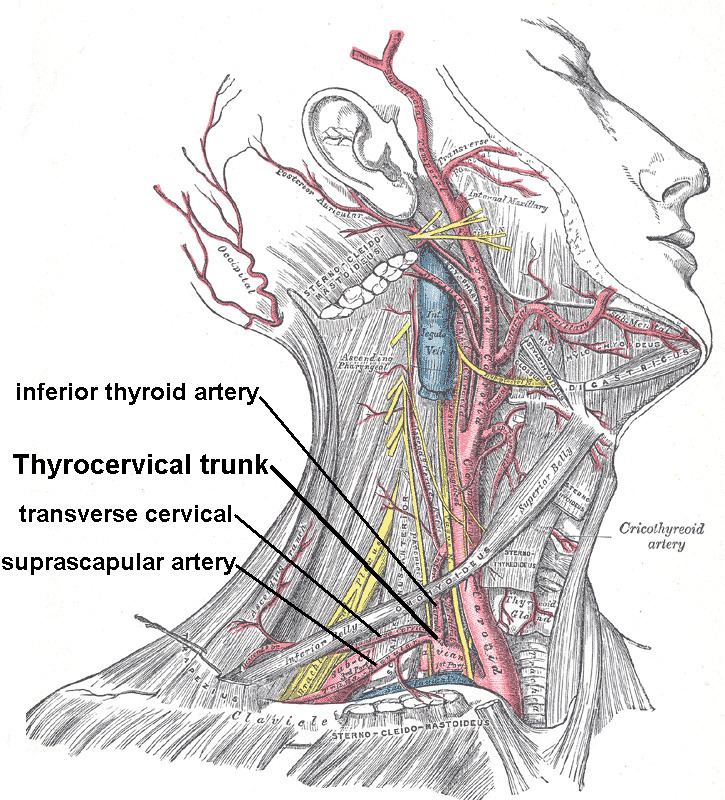Source Thyrocervical trunk | Dorlands/Elsevier a_61/12156407 | |
 | ||
Branches Superficial branchDorsal scapular artery (Deep Branch) Supplies The trapezius and Sternocleidomastoid muscles Latin Arteria transversa cervicis,arteria transversa colli | ||
The transverse cervical artery (transverse artery of neck or transversa colli artery) is an artery in the neck and a branch of the thyrocervical trunk, running at a higher level than the suprascapular artery.
Contents
Structure
It passes transversely below the inferior belly of the omohyoid muscle to the anterior margin of the trapezius, beneath which it divides into a superficial and a deep branch.
It crosses in front of the phrenic nerve and the scalene muscles, and in front of or between the divisions of the brachial plexus, and is covered by the platysma and sternocleidomastoid muscles, and crossed by the omohyoid and trapezius.
The transverse cervical artery splits into two branches, a superficial one and a deep one:
Superficial branch
It ascends beneath the anterior margin of the trapezius, distributing branches to it, and to the neighboring muscles and lymph glands in the neck, and anastomosing with the superficial branch of the descending branch of the occipital artery.
It has an ascending branch and a descending branch. The descending branch of the transverse cervical artery anastomoses with the deep and dorsal scapular artery which in turn links to the subscapular. This anastomosis is a ring circulation around the scapula where it continues to the suprascapular artery via the circumflex scapular artery.
Deep branch
The dorsal scapular artery (or descending scapular artery) is a blood vessel which supplies the levator scapulae, rhomboids, and trapezius.
It most frequently arises from the subclavian artery (the second or third part), but a quarter of the time it arises from the transverse cervical artery. In that case, the artery is also known as the deep branch of the transverse cervical artery, and the junction of those two is called cervicodorsal trunk.
It passes beneath the levator scapulae to the superior angle of the scapula, and then descends under the rhomboid muscles along the vertebral border of the scapula as far as the inferior angle.
